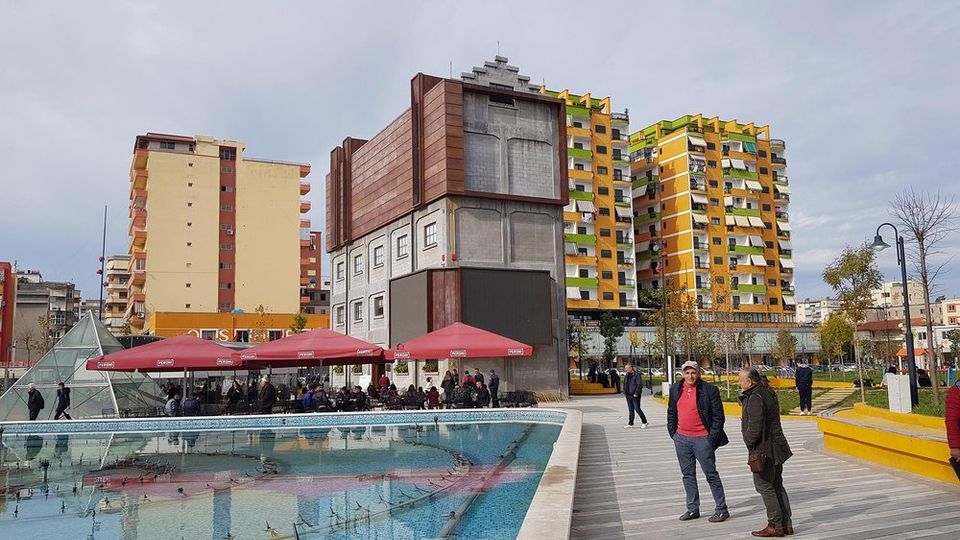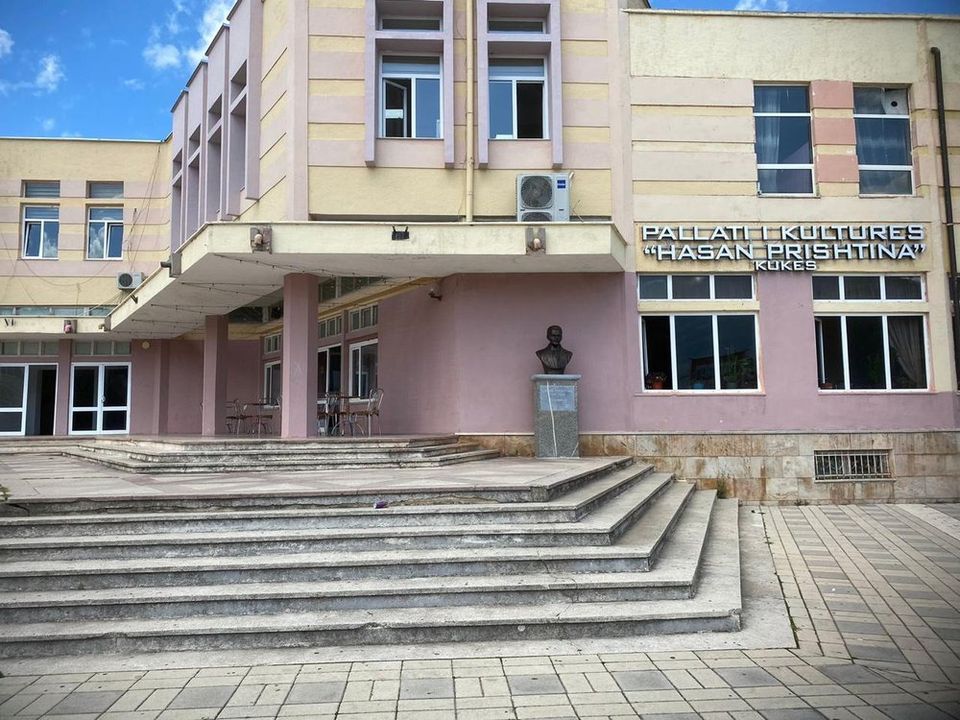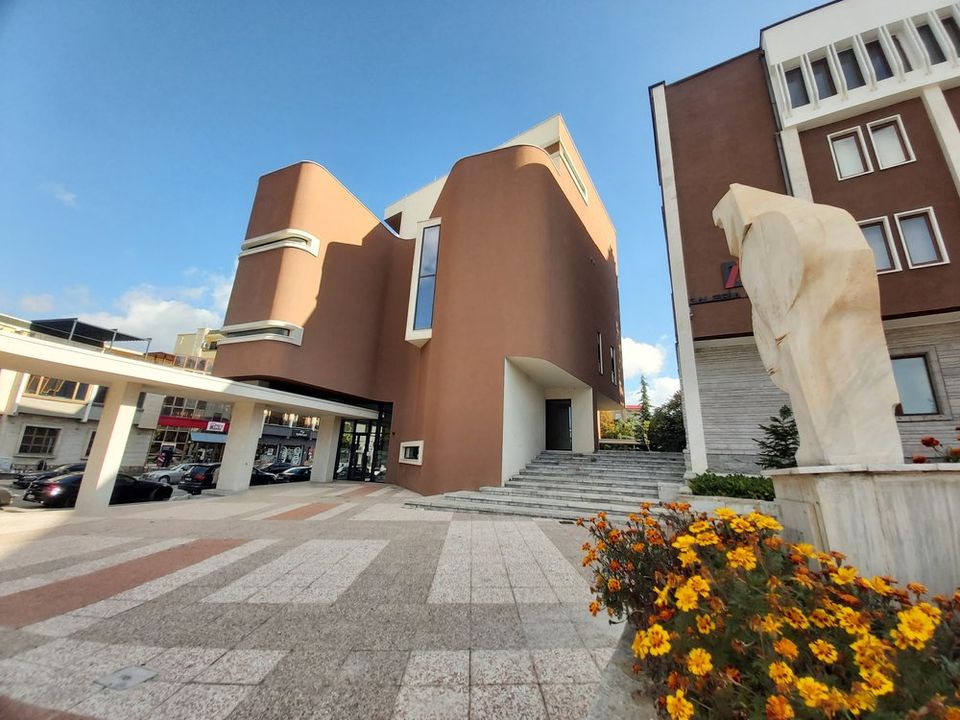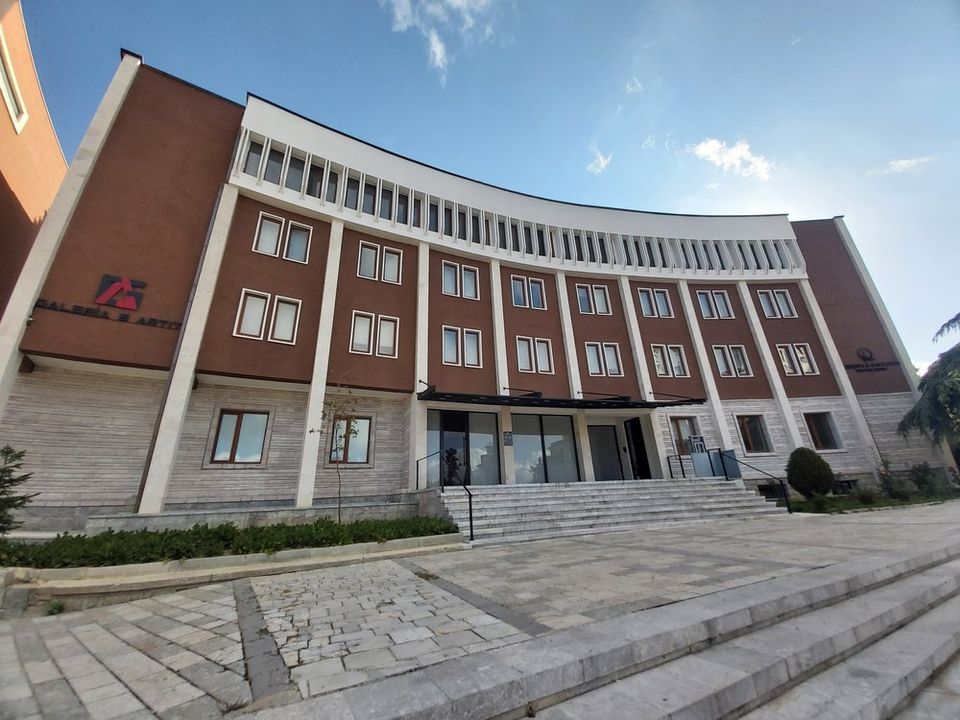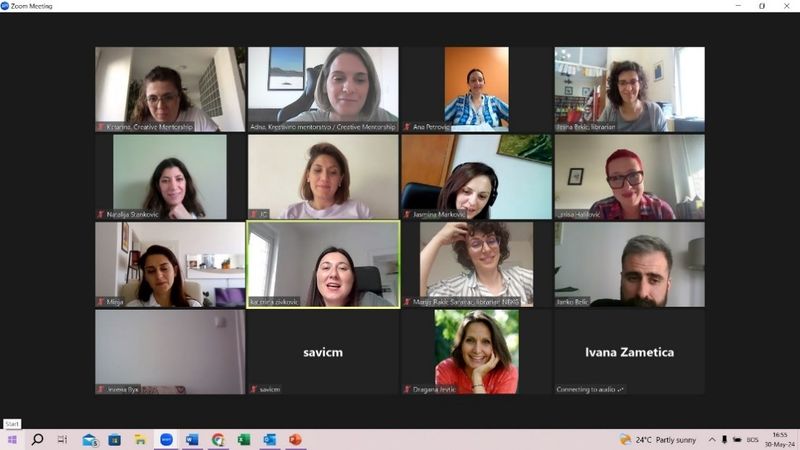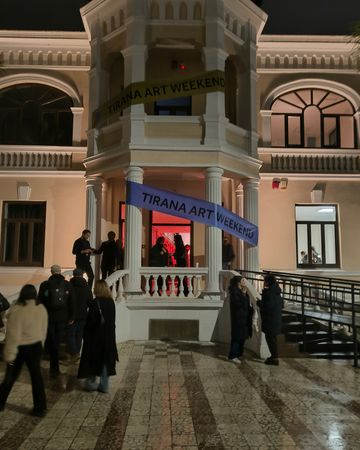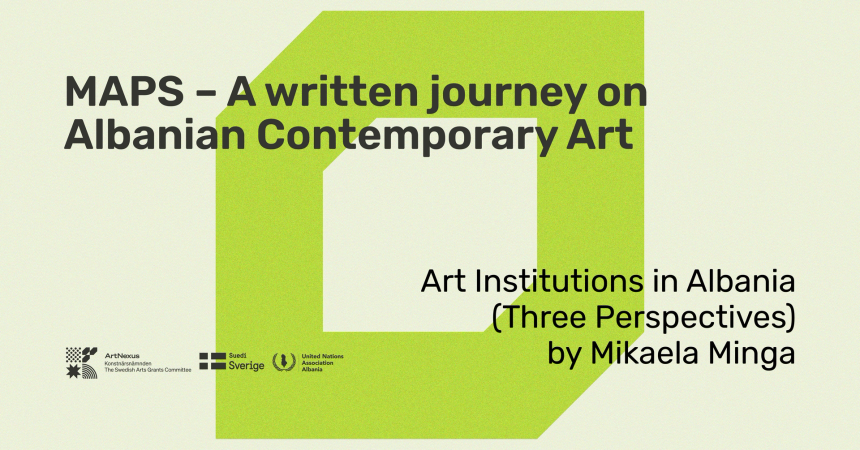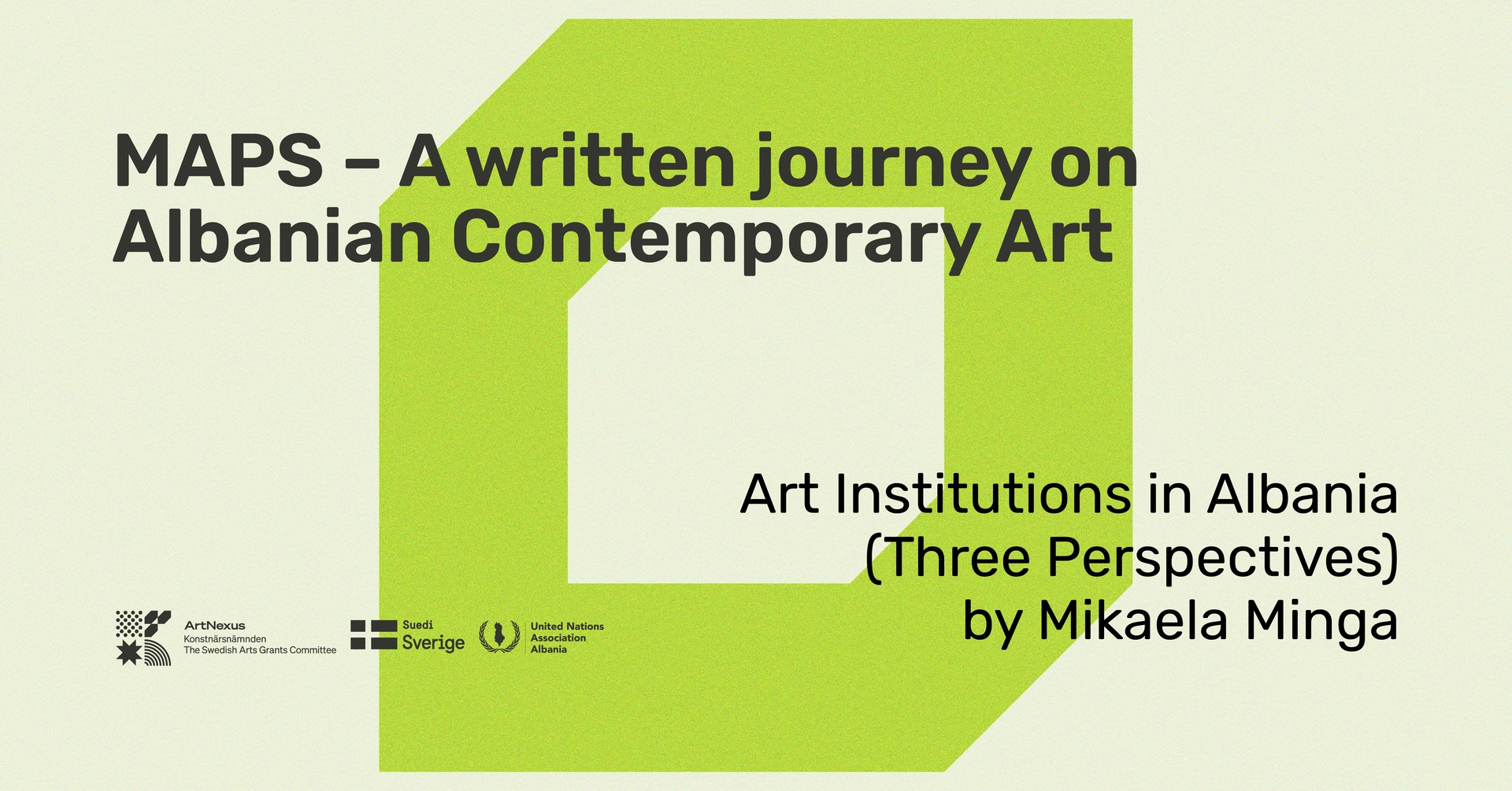
MAPS 5 - Art Institutions in Albania: Three Perspectives
1. An Urban Ethnographic Journey
Artistic institutions are an integral part of any society. In Albania, the development of the institutional artistic life was shaped through a centralized state cultural program that bore a totalitarian character. This program commenced shortly after World War II with the establishment of the dictatorship of the proletariat, during which most of the country’s artistic institutions were founded and maintained under state ownership. Today, Albania has inherited an extensive network of these artistic institutions, which have undergone various reforms and transformations over time. On the national level, these institutions include the National Theater, the National Opera House, the RTSH Symphony Orchestra, The National Ensemble of Folk Songs and Dances and the National Gallery of Arts. At the local level, there are cultural centers that have evolved from the former institutional “houses” or “palaces” of culture. This significant shift was formalized by Council of Ministers Decision No. 650, dated 20.11.1995, marking an essential step in the reform of these institutions.
Today, as we write, these institutions have evolved into hybrid, multifunctional entities, acting as umbrellas for various units and bodies. These include city theaters, art galleries, specialized musical ensembles (such as wind and brass ensembles, traditional ensembles, and, in some cases, string or symphonic orchestras), and children’s cultural centers. In many cases, these units also encompass a network of local museums.
Over the summer, I embarked on an urban ethnographic journey through several of these institutions . My aim was to observe how institutional artistic life takes shape, exploring the interactions among artists, cultural 'actors', entrepreneurs, and the communities of art and culture enthusiasts they engage with.
In Korçë, I found a recently renovated institution within what, in the city's collective memory, was known as the (former) Party Committee Center, which, after the ’90s, had functioned as the District’s Council. This institution, with its imposing architecture in the city center, now serves as the Center for Culture and Innovation. In reality, it comprises two entities operating independently on separate floors. The first, the Cultural Center, includes the "Guri Madhi" art gallery, a digital gallery, and studio spaces for various local artistic ensembles (the brass band, "Lira" choir, traditional ensembles, and orchestra). Meanwhile, the Innovation Center is designed as a series of spaces for young people, aiming to provide opportunities for technological experimentation and to encourage entrepreneurial skills. Next to this building stands the "Thimi Mitko" library, housed in a brand-new facility. Alongside the "Andon Zako Çajupi" theater and the museum network, these institutions fall under a single directorate, the Directorate of Arts and Culture within the Municipality.
This is an infrastructural investment that was developed concurrently with, and even somewhat anticipated, the state program which, as of January 2024, merged the Ministry of Culture to form the Ministry of Economy, Culture, and Innovation (henceforth MEKI). In this way, Korça aligned itself with the new governmental model that integrated culture and innovation, establishing a renovated institutional framework. (In discussions with residents, this center is also referred to as the Center for Art and Innovation.)
On the other hand, it appears that the urban community has access to the necessary spaces for creating and enjoying art. I use the word “appears” because, despite the local government's cultural policies that are broadly supportive and aimed at promoting cultural tourism, the city’s population has been dramatically declining due to emigration over the past decade, as confirmed by the latest census.
In Elbasan, the Art Center is located in the building known locally as the 'Skampa' theater. This center includes the theater, musical ensembles, and other related formations, all managed by the Agency for Culture and Tourism of the city’s municipality. Housing all these functions within a single building, originally designed as a theater, creates a certain 'conflict' between its intended purpose and its current role as an art center. The shortage of space was a notable issue and a concern for the management, as was the limited number of personnel.
A similar, yet more challenging, situation was evident in the city of Durrës. The 'Aleksandër Moisiu' Cultural Center encompasses various units, including the theater, the art gallery, the city band, the mausoleum of martyrs, and the ethnographic museum. This center operates under the Directorate of Education-Culture, Sports, Youth, and Religious Communities of the Municipality. The center is physically housed within the theater, which has been known as “Aleksandër Moisiu” since at least 1965. This overlapping of functions has sparked an ongoing debate about the identity of both the building and the institution, a discussion that has persisted for several years
This conflict between a building as a space and a building as an institution is further exacerbated by the fact that, at the time of writing, the ethnographic museum remains closed due to severe damage caused by the November 26, 2019 earthquake. Additionally, the art gallery and the mausoleum are also out of service and awaiting reconstruction.
Thus, the activities of the Cultural Center are notably reduced compared to those of the theater. Meanwhile, the theater building is set to be restored by the city municipality and MEKI.
In Vlorë, just before reaching Independence Square, on a side street, one can find the Center for Art and Culture. This center is housed in the same building that once accommodated the “Labëria” Palace of Culture, a name that still persists in local conversations and online searches. Unlike the previously mentioned cities, the “Petro Marko” Theater in Vlorë currently functions as an independent directorate under the municipality, while the Center for Art and Culture falls under the administration of the Center for Tourism, Art, and Culture of the Municipality. The institution has been partially restored and includes an art gallery, a cinema hall, a puppet theater, the city library, a brass band, and a string orchestra. The ethnographic and historical museums of the city are also part of this same administrative structure. 3 The cultural center’s spaces are primarily used as venues for specific events. The building was only recently “freed” from the offices of various entities and associations that had rented the spaces, a trend that impacted many such institutions after the 1990s. As such, the cultural center is offered to the city more as a space for cultural activities—some still awaiting use—rather than as a cultural institution with a defined identity.
In Kukës, I encountered a situation similar to that in Vlorë. The Cultural Center, situated in the heart of the city, still displays its original name on the façade: the “Hasan Prishtina” Palace of Culture. Whether intentional or not, I saw this dual identity as a meaningful provocation, symbolically reflecting what these “centers” represent—and fail to represent—today.The past has left strong marks on this building, which, with its somewhat distorted exterior architecture but refined interior decoration, seems to challenge the various institutional reforms of the last 30 years. These reforms have largely attempted to transform these institutions but without adequately supporting the capacities and skills of the people working within them. It also challenges local communities, the people who, in many cases, looted, stole, or abandoned them as if they belonged to no one, without showing signs of reflection on this communal artistic institutional memory. Some of the “palace of culture” spaces were rented by civil status offices, veteran offices, etc., a phenomenon that, as I previoulsy mentioned, characterized the post-dictatorial period for many years. Inside, some halls had been restored with international funds, such as the Turkish Youth Corner, funded by TIKA, and the American Corner. The signs were clearly distinguishable to any visitor. The city library and the children's cultural center were also located in this building. However, of all the spaces, the most striking was the large concert hall with about 450 seats, a space that now serves a city of only 18,000 inhabitants.
The cultural center hosts various activities organized by the Municipality, a series of painting and music courses for children and youth, and, at the time of writing, does not include a brass ensemble or any formal traditional ensemble.
What catches my attention in Fier is the “Vilson Kilica” art gallery, housed in the renovated premises of a former flour factory built in the 1930s. This gallery, along with the “Bylis” theater, carries the main weight of the city's institutional artistic life, despite having an extremely reduced staff. Similarly to Korça, the Center for Cultural Activities, the library, the historical museum, and the Children's Cultural Center operate under one umbrella, under the Directorate of Art and Culture of the Municipality. The Center for Cultural Activities hosts the “Myzeqeja” ensemble, the wind and brass ensemble, and organizes activities for children and youth. This Directorate is located in what was once the Pioneer House.
If one goes to Shkodër to visit the “Pjetër Gaci” Cultural Center and the city’s Art Gallery, it can initially be a bit challenging, due to it’s location. Hidden within a complex of commercial buildings, it is situated in a five-story new building of modernist architecture, whose entrance is through an inner courtyard. This is in stark contrast to the open space and imposing presence of the “Migjeni” theater in the city. The new building houses its units by floors: on the first floor is the city’s Art Gallery, the third floor houses the Cultural Center, while the other floors are home to the Youth Center “Atelie,” which, according to the sign at the entrance, was reconstructed in 2018 by the Municipality of Shkodër through the project “Empowered Youth, Sustainable Future,” part of the Italian-Albanian debt conversion program for development. Meanwhile, since 2024, the management of artistic and cultural institutions falls under the General Directorate of Culture, Education, Youth, and Sports in the Municipality of Shkodër
Climbing the respective floors, I was reminded of Dino Buzzati’s story “Seven Floors.” Unlike his character, I was going up, while placing myself in the shoes of someone contemplating on what it means to move from one floor to another.
The infrastructural differences were striking: the Youth Center, designed as a space for young people, with renovated areas and vibrant furnishings, stood in sharp contrast to the “modest” conditions of the Gallery and the Cultural Center— both institutions that carried a long-standing history of the city’s artistic life. The “Pjetër Gaci” cultural center was even more “impoverished” in this regard, with only two minimal spaces (a rehearsal room and an archive) preceded by a small waiting corridor displaying some of the band's achievements (awards, festival participations, etc.). This Center includes the city’s symphony orchestra, brass band, and a dance group.
During my visit, I entered upon a rehearsal of the band “Karajfilat që ka Shkodra,” an ensemble of urban Shkodran music. It was a hot August day, with temperatures exceeding 40 degrees Celsius, and the musicians played without air conditioning, with open windows under the scorching midday sun. Observing this energy, I couldn’t help but wonder: Was it truly impossible for the Municipality, when renovating the floors of the Youth Center in 2018, to also make even minimal restorations to a Cultural Center with nearly 80 years of history? I had my answer when I discovered that even the building’s elevator did not stop on the third floor, where the Cultural Center is located—a detail only the typical humor of Shkodra’s people could lighten.
In Tirana, local artistic institutions fall under the jurisdiction of the General Directorate of City Promotion and the Directorate of Culture and Cultural Heritage. These include the Tirana Art Gallery (GAT), the Cultural Center (with two units: the Metropol Theater and the Traditional Ensemble), the wind and brass ensemble, and local museums
The Metropol Theater and the Tirana Art Gallery (GAT), despite still being relatively new, manage to do this by attempting to build bridges with the urban community. GAT operates with a very small budget and exists in a context that, especially in the past two years, has been marked by a “boom” in private galleries, some of which do not hesitate to benefit from municipal budgets as well. Despite this, GAT has managed to offer a modest yet inspiring calendar of exhibitions and artists that resonate more with the city than the capital itself. Meanwhile, the Metropol Theater, with a longer history, has managed to live up to its name for those who follow it, offering a program of artistic performances that align with its urban profile. Additionally, it has introduced an educational section focusing on theater in schools, which for the past eight years has highlighted Albanian theatrical works that have not been staged before.
2. Vibrant Times
We are living in a situation where the artistic life can be called “vibrant” festivals, theater performances, concerts, exhibitions, and more festivals. A significant portion of these events are realized by the independent scene, supported financially by public funds
In reality, an artistic institution should not be viewed merely as an organizer but, above all, as a process, as a dynamic organism
Local artistic institutions find it difficult to function as such an organism. They operate under a centralized model where the role of the leading authority is essential for their functioning, while they often work with limited staff. The constituent units, although under the same roof, remain fragmented as they cover different typologies; equally fragmented is the attention they receive from the “top” leadership.
Both employees and the community find it difficult to view units such as theaters, libraries, and art galleries—institutions with a long tradition—as mere units headed by a single official. Suitable facilities alone are not enough to turn a cultural center into an institution. While it is beneficial to renovate facilities and invest in infrastructure, for these spaces to thrive, human capacities are essential. And Albania struggles with this: on one hand, people are leaving, and cities are being emptied (despite the deceptive human energy that Tirana may project); on the other hand, politics does not invest in professional authority or decision-making but rather in political and partisan representation. The “role of institutions” is often discussed, but, in reality, an institution does not play a role—it is the organism, and this organism functions thanks to the human capacities that bring it to life. It depends on the professional who, when expressing their own opinion, should do so without fear of losing their job.
Although nearly 20 years have passed since their reform, these centers still carry the legacy of their past as cultural houses or palaces, impacting both their operations and the mindset of those who work there. This mindset is caught in a cycle where the artist is both a private individual and a public official, responsible for contributing to and upholding the institution they serve. Cultural and artistic policies, whether at the central or local level, have only reinforced this cycle. Additionally, the bureaucratic position of these employees fluctuates between being an artist, an organizer, a manager, and even a porter moving chairs for the next show.
This situation arises because cultural houses and palaces used to be multifunctional institutions that offered clear concepts of entertainment, leisure, education, and performance, while also implementing the ideological order of the regime
When it comes to central institutions, the issues present themselves somewhat differently, but they remain institutional in nature. One persistent critique from journalist and researcher Elsa Demo is the lack of annual calendars. For example, the calendar of the National Opera House “covers deeper issues related to the shortage of professionals in artistic direction, conducting, directing, singing, and ballet. The ensemble is aging. The average age of the dancers is over 35, despite their brilliance in television shows. […] there are not enough soloists. The national repertoire, particularly from the socialist realism era, is recycled with new costumes.
A proper calendar is not simply a random collection of shows. For instance, when it comes to traditional Albanian works, there are no clear selection criteria, much less a willingness to reinterpret, reassess, or reimagine them. This issue strikes at the very “heart” of the matter: the original score (a point well understood by both orchestra members and soloists). Authoritative musical works published to philological standards, which are standard practice globally, are lacking. Additionally, there has been little effort to rediscover works that remained hidden for ideological reasons but deserve attention. While there was some initial encouragement for contemporary repertoire through composer competitions, it ultimately amounted to little more than watching an online ceremony for the winners—and nothing further. Last year, this theater brought a highly promising novelty: the cultivation of the classical sacred repertoire, with works that have historically been absent in Albania due to their religious nature
Ermonela Jaho undoubtedly holds her well-deserved place as an internationally acclaimed artist to be honored and appreciated. However, Ermonela Jaho is not the image of a working Albania, as noted by the mayor of Tirana
The RTSH Symphony Orchestra is in a similar situation. There is no annual calendar, aside from a promising attempt by Aurelien Zielinski (the artistic director of the orchestra during 2023). From the start, Zielinski aimed to convey a distinct “identity” in the orchestra’s program, featuring thoughtfully curated works, composers, and concert programs, rather than piecing them together arbitrarily. The most significant novelty in this regard was the inclusion of Albanian composers’ works, presented with a contemporary approach in regard of interpretation
While I focused on music institutions, the issue with artistic calendars extends to all others, highlighting that the works staged are not the result of a coherent process. This shows that these institutions, like local ones, struggle to function as dynamic entities. Over the past two or three years, a glance at cultural activities reveals that the dominant format is the festival: of every type, for any category, and organized by anyone. For Elsa Demo, the current cultural landscape resembles according to a model of a “festival for each one”, where anyone can create their own festival
However, a festival remains an institutional practice. While it can be conceived by a single individual, it cannot be executed alone. Despite the tendency in our culture to claim otherwise, a festival inherently carries an institutional dimension, even when this institution is disregarded or misused.
During the dictatorial period, the festival represented one of the strictest and most authoritative forms for institutionalizing various practices, from folk and traditional ones to those of a more “cultivated” artistic nature (film, music, etc.). Today, we have reached the opposite extreme, where the festival has become a form of artistic liberalization.
3. The Need for Transformative Power…
It is crucial in this context to refocus on artistic institutions, not only for what they are and represent but also to reflect on the institutional dimension of artistic practices. Laurent Fleury discusses the transformative power of artistic institutions, drawing examples from the Théâtre National Populaire and the Pompidou Center/Beaubourg in Paris. According to him, an artistic institution cannot be considered a static, given entity. Institutions are defined by their internal processes, which often foster tensions and confrontations “between that which is instituted and that which institutes, in which instituted forms are ceaselessly corroded, subverted, and de-structured by the pressure of instituting forces”
Our institutions stem from a totalitarian tradition, characterized by authoritarian and centralized approaches to leadership and limited funding. Their functioning is heavily influenced by economic, social, and especially political conditions. Speaking of the transformative power of an institution may seem entirely utopian. Furthermore, even the “community” within these institutions bears its own “faults” and responsibilities, from internal discipline and regulations—regulatory models that should not derive from the dictate of superiors but from a shared sense of responsibility—to awareness of the artist’s status in relation to the institution where they work and contribute.
To achieve this, it is not only necessary to review the current law on art and culture or the method of funding. What is particularly needed is an awareness of the essential role that institutions must play in cultural policies. Researchers agree that, despite differences in their levels of importance, all artistic institutions share an organizing logic that grants them the authority upon which any cultural policy should be based to create the conditions needed for these institutions to function effectively[
Within this complex landscape, there are still efforts that, although fragile, are worth highlighting for the reason that they combine three essential elements: the foundational idea of the event, its necessary institutional dimension, and their success in creating an artistic community (not just a circle of friends), comprising both artists and audiences/followers. Some of these initiatives do not receive significant media attention (perhaps because the founder/director of the festival is not a well-known public “star”): Korça Short Film Festival (11 editions), the Festival of String Orchestras and Chamber Music in Elbasan (9 editions), the “Skampa” Theater Festival (26 editions), Focus Award in Fier (15 editions), Shkodra Jazz Festival and Rock Academy (15 editions), Ekrani i Artit (7 editions), Gjallica International Festival in Kukës (3 editions), and the Cosmos Tirana Music Festival (3 editions).
We can trace the potential for the transformative power of institutions in how the “healthy” aspects of cultural centers I mentioned earlier have managed to endure. Today, this can be seen in the efforts to give institutional profiles to specific city ensembles (bands, ensembles), initiatives to create local string or symphony orchestras (whether composed of local musicians or so-called “hired mercenaries”), and the activation of artistic courses (music, painting) for students and young people. Additionally, despite difficulties, each center strives to maintain a sustainable long-term artistic calendar, including: Art Colonies (Korçë, Fier), the Autumn Salon, the “Idromeno” Prize (Shkodër), and “Spirit of the Balkans” (Korçë). However, these efforts remain threatened by a framework of “leisure culture focused on enjoyment and quick consumption,” which has begun to influence cultural policies
Lastly, we turn to the transformative power of central artistic institutions. Even they are not immune to the festival-focused approach, despite their prestige and authority in this realm, and even if they can draw upon notable Albanian figures recognized worldwide as points of reference. It seems ironic to host an International Dance Festival when the national dance troupe itself suffers from the various issues mentioned earlier.
However, I would like to focus the discussion on the urgent need to dismantle the centralized, politically-oriented status of institutional directors. Ideally, a director should not treat the institution as personal property but should combine professional experience, leadership skills, communication, and team-building capabilities. The director represents the institution, not the other way around. Even in an ideal scenario, the voice of artistic boards—almost unheard of until now—is essential. In a country like Albania, political, economic, and social developments have an immediate impact on the very existence of institutions. Therefore, an artistic board also serves as a mediator between the artistic needs of an institution and these external forces.
A special thank you to: Blerta Belliu, Blerim Narazani, Klinsi Lala, Saimir Ahmeti, Artur Gjino, Elio Bajramaj, Dritan Lumshi, Aulon Naçi, Genc Demiraj, Sara Smaja, Dritan Mlika, Fatmir Juka, Elsa Demo, Sokol Çunga, and all those who modestly asked to remain anonymous
For more information, see: Gëzim Kabashi, “The Restoration of the Building Reopens the Debate: Theater or ‘Aleksandër Moisiu’ Cultural Center,” published online on 28.03.2022, https://www.reporter.al/2022/03/28/restaurimi-i-godines-rihap-diskutimin-teater-apo-qender-kulturore-aleksander-moisiu/ (last consulted on September 27, 2024); Gëzim Kabashi, “The ‘Aleksandër Moisiu’ Theater in Durrës Prepares for Reconstruction,” published online on 25.03.2024, https://www.reporter.al/2024/03/25/teatri-aleksander-moisiu-ne-durres-behet-gati-per-rikonstruksion/, (last consulted on September 27, 2024).
It is worth clarifying that the ethnographic museum also faces ownership issues. Meanwhile, in Durrës, many spaces that had served as artistic venues until the 1990s have been returned to their rightful owners. For more information, see: Gëzim Kabashi, “The Transition Earthquake Shrunk Cultural Spaces in Durrës,” published online on 25.2.2021. https://www.reporter.al/2021/02/25/termeti-i-tranzicionit-tkurri-hapesirat-kulturore-ne-durres/ (last consulted on September 27, 2024).
Meanwhile, the Museum of Independence is under the jurisdiction of MEKI.
These include: the Library, the “Pjetër Gaci” Cultural Center, the Art Gallery, the “Oso Kuka” Museum, the Museum of the Victims of Communism, and the Children's Cultural Center. Meanwhile, the “Migjeni” Theater operates as an independent directorate within the general directorate.
Of these, only the “House-Studio Kadare and Agolli” museum is currently operational.
Here, I am referring to open call funding for individuals and artistic associations provided by MEKI and local authorities.
For this approach, see: Laurent Fleury, “Sociology of Culture and Cultural Practices – The Transformative Power of Institutions”. Lexington Books, 2014, p. 85.
Mikaela Minga, “Albanian Music on the Paths of Socialist Construction: Institutions and Institutionalization,” Antropologji, 2018, no. 1, p. 51.
For this see: Elsa Demo, “What Was Said and What Was Done – Editorial for Artes. https://lajme.rtsh.al/artikull/-cfare-u-tha-dhe-cfare-u-be-editorial-nga-elsa-demo-per-artes-; https://www.youtube.com/watch?v=p9TR8oNg3vs, (last consulted on September 27, 2024).
Among these were works that were performed for the first time, such as Mendelssohn's oratorio “Elias”.
"We are very grateful for your contribution. You are an ambassador for the country, a symbol of modern Albania, of an Albania that works, an Albania that is good, prosperous, and believes in talent, hard work, and effort. With this small symbol of the Clock, which will always show you the exact time of Tirana, I want you to remind yourself that perhaps it is always time to return to your heart, to your home." For more information: https://shqiptarja.com/lajm/ermonela-jaho-koncert-ne-teatrin-e-operas-dhe-baletit-veliaj-i-dhuron-kullen-e-sahatit-mirenjohes-qe-je-imazh-i-shqiperise-moderne-qe-punon, published on August 4, 2024 (last consulted on October 2, 2024).
I would highlight, for example, the ‘Concerto for Cello and Orchestra’ by Thoma Gaqi, performed on May 18, 2023, with soloist Alexis Descharmes and conductor Daniel Geiss.
Elsa Demo, "What Was Said and What Was Done – Editorial for Artes", https://lajme.rtsh.al/artikull/-cfare-u-tha-dhe-cfare-u-be-editorial-nga-elsa-demo-per-artes-; https://www.youtube.com/watch?v=p9TR8oNg3vs, (last consulted on September 27, 2024).
Laurent Fleury, Sociology of culture and cultural practices – The transformative power of institutions. Lexington Books, 2014, pg. 85.
Birgit Eriksson, Carsten Stage dhe Bjarki Valtisson (edited.), Cultures of participation. Arts, digital media and cultural institutions, Routledge, 2020, pg. 8
Elsa Demo, "What Was Said and What Was Done – Editorial for Artes",https://lajme.rtsh.al/artikull/-cfare-u-tha-dhe-cfare-u-be-editorial-nga-elsa-demo-per-artes-; https://www.youtube.com/watch?v=p9TR8oNg3vs, (last consulted on September 27, 2024).
